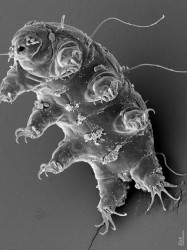 |
| Guards in protective gear near the Fukushima-1 nuclear plant's main gate, |
Safecast.org has been handing out Geiger counters to residents and running them around the affected areas around the damaged Fukushima Daiichi plant. The information is updated to the website, which aggregates data from government agencies and charity organizations who are also watching radiation levels.
The goal is to provide information that is more transparent, regularly updated, and localized than is currently available. People in Japan are already living in perpetual uncertainty, not knowing whether another plate-tectonic event is about to ravage what meager stability they have forged. The inconsistent reports of radiation levels in the air, the food, and the water leave people essentially making decisions blind.
There's a lot that could be said about the responsibility of government in disaster situations. The problem in Japan doesn't just amount to a lack of government response - it's also an issue of transparency. Numbers that are reported are hard to contextualize because the radiation-measuring process isn't clear and residents have no way to fact-check the information.
